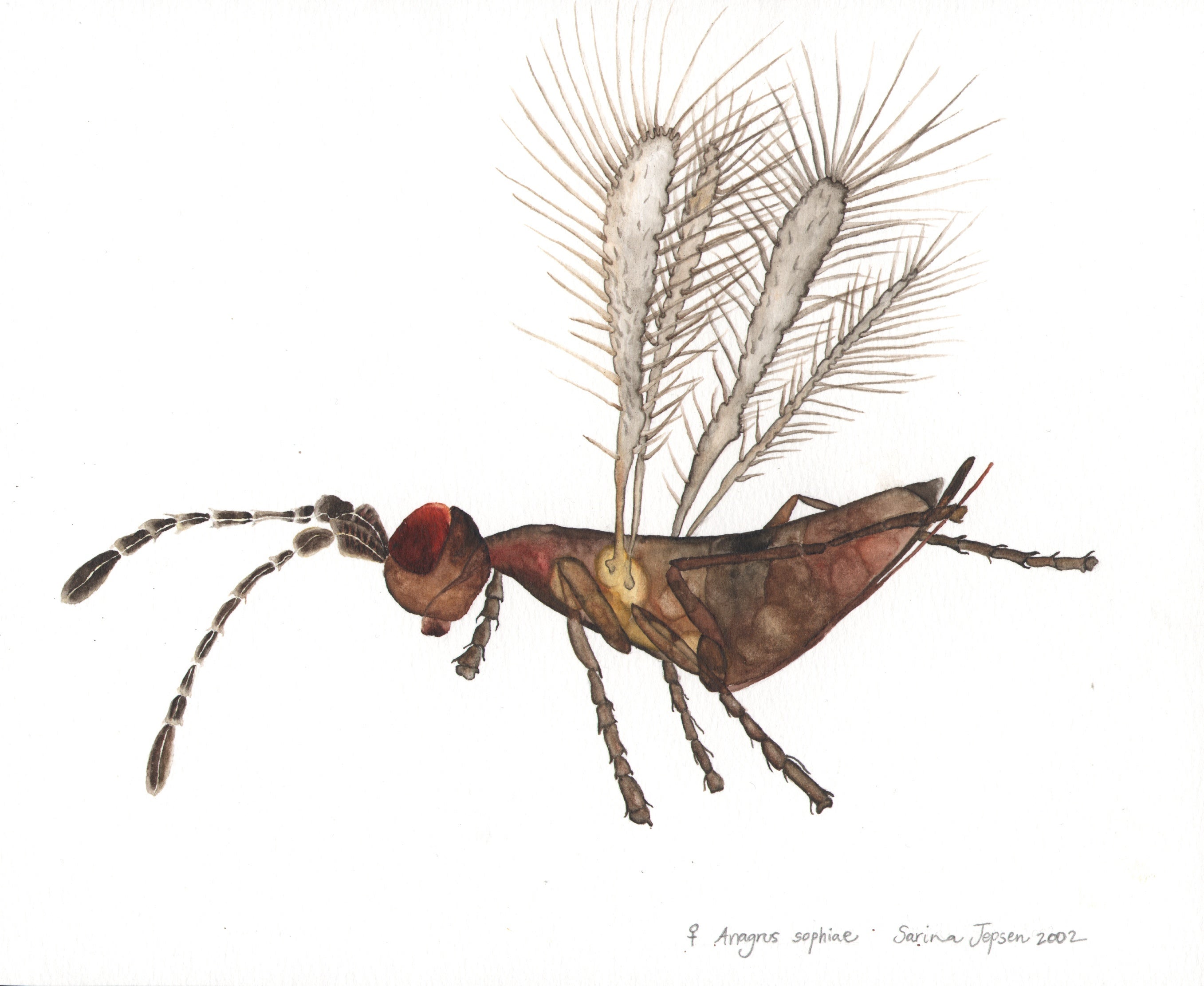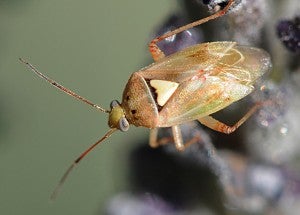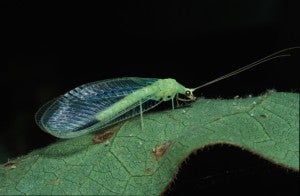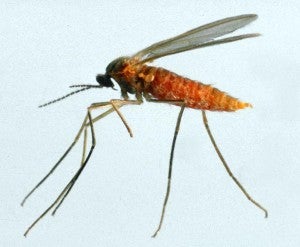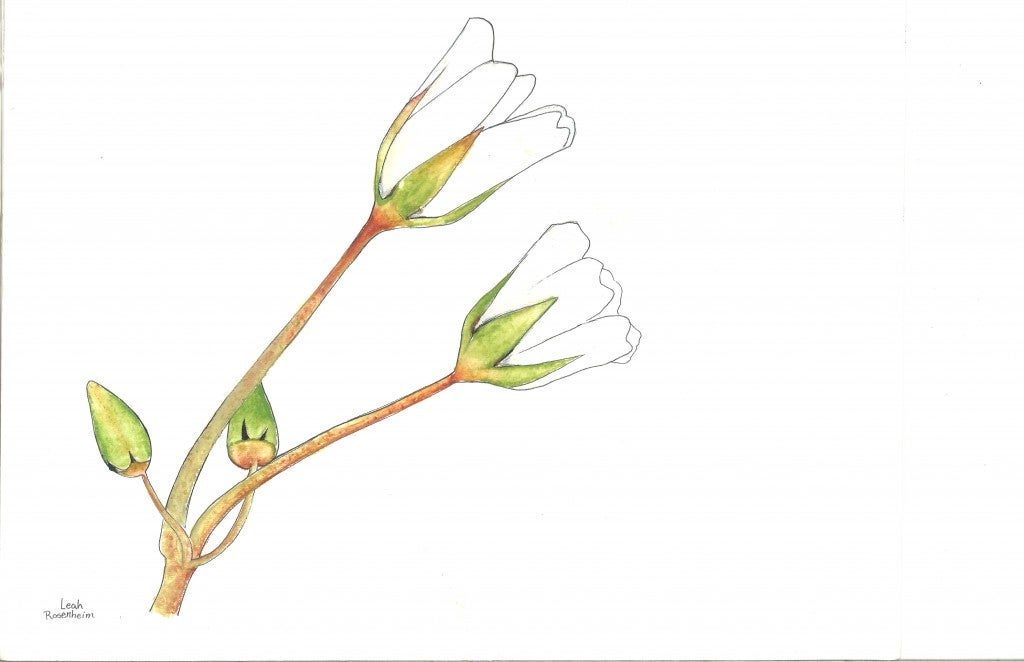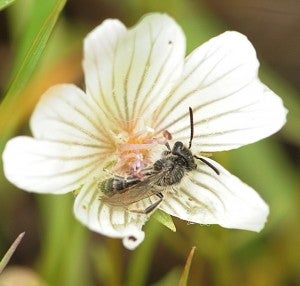My research
I am an ecologist with broad interests, including behavioral and evolutionary ecology as well as population and community ecology. I focus on predator-prey, parasitoid-host, pathogen-host, and plant-insect interactions. My general approach is to try to ask important, fundamental questions in ecology with an eye to advancing our basic understanding and, when possible, to simultaneously make contributions to solving problems in the real world. I attempt to integrate empirical studies (observational work, manipulative experiments) with theoretical investigations (simulation and basic analytical models); I often find that I can make the best progress with my research problems by conducting a dialogue between theory and experiment. I also try to balance work in natural ecosystems and in agricultural ecosystems, where predators and parasitoids are so important as biological control agents.
I currently have three major themes to my own research, which I will describe here. Some of the students and postdoctoral researchers in my lab are working on quite different topics, so I encourage you to see their web entries to get a sense of the full picture of research activity in the lab.
Ecoinformatics: applications in agricultural insect ecology
The term bioinformatics was originally developed for the new field devoted to making sense of the vast quantities of DNA sequence data being generated by genomics projects. The key underlying idea is the focus on extracting biologically useful insights from pre-existing data sets (“data mining”). Ecoinformatics attempts to adopt the same basic approach to probe important ecological hypotheses using large pre-existing data sets, and (hopefully) can be a tool that complements the more traditional approaches to ecological investigations (experiments, observations, models).
I am working with several collaborators to develop novel ecoinformatics approaches to solving difficult problems in agricultural insect ecology. Many farmers employ professional consultants who sample in their fields to estimate the densities of various insect pests (and sometimes beneficials) to provide guidance on control measures. The total effort invested in the combined sampling efforts of consultants is vast – much greater than we could contemplate in a typical research setting. Usually, however, at the end of the growing season the data generated by the professional consultants are thrown out (or, stuffed in a dusty storage locker).
We are working to harness data collected by consultants and farmers. My initial efforts were were made with cotton and almond farmers, and now my primary emphasis is with citrus growers, which I expect to be a ongoing, multi-year project. This includes data on (i) insect densities (typically repeated measurements of insect population densities across the growing season); (ii) plant nutrition (macro- and micro-nutrients); (iii) descriptors of the agricultural landscape (what fields surround the focal field?); (iv) the rotational history of the focal field (what crops were present in prior years that may have shaped the buildup of pest and beneficial insect populations?); (v) weather variables; (vi) pesticide use; (vii) measures of crop plant growth; and (viii) crop yield (quantity and quality). By integrating many data streams into a relational database, we can build large and highly flexible data sets that are allowing us to address a host of important questions. In this way, we are finding new ways to enhance the productivity and profitability of farming. Instead of working with data sets made up of observations of, say, 10-20 fields (as was the case when we studied insect population dynamics in California cotton using data that we gathered with our own hands), we are instead working with data sets made up of observations on 2,000 fields, or more. The dramatically larger data sets provide unrivaled abilities to discover relationships that are important to farmers.
Ecoinformatics research involves the application of new tools, including statistics and database design, and a new mode of intensely collaborative research in which we work with farmers and consultants from the very outset of the project to prioritize research questions and interpret findings.
On citrus, which has a quite rich community of insect herbivores and beneficial insects (predators and parasitoids), we are currently interested in the following sorts of questions: (1) what aspects of citrus pest management, developed originally for oranges, need to be changed to adapt management practices for mandarins, which are rapidly becoming the most important citrus crop grown in the state? Oranges (Citrus sinensis) and mandarins (Citrus clementina, Citrus reticulata, Citrus unshui, Citrus tangelo) are different species of host plants, so there is little reason to expect pest herbivores to interact with them in the same way, and we are discovering that there are important differences. For example, one native herbivore, the fork-tailed katydid, loves to chew into young, developing orange fruits, creating major economic damage, but appears to reject young mandarin fruits after just a tiny taste. Thus, katydids may not be pests at all on mandarins. (2) Over what time periods are developing citrus fruits vulnerable to damage by direct pests, which can generate cosmetic damage to the fruits (i.e., citrus thrips, citrus cutworms, katydids)? (3) Do citrus trees respond to early fruit damage with elevated abscission responses, and does that influence fruit yield? (4) How do citrus red mite populations present during the spring influence final yield (fruit number, fruit size, and fruit quality), on oranges vs. mandarins? (5) Does citrus tree nutrition interact with herbivory to shape pest impact? (6) Do multiple herbivores create important interactive effects on tree vigor, or are additive models of herbivore impact sufficient for pest management decision making? (7) Does the agricultural landscape influence colonization of citrus groves by pests or natural enemies? (8) How does the community of herbivorous and predatory citrus arthropods, and potentially some citrus pathogens as well, change over the long life of a citrus grove (some of our groves are >100 years old)? How do they shape the long-term productivity of the citrus grove? One of the nice aspects of ecoinformatics approaches to agricultural entomology is that they are extraordinarily flexible — many different questions can be examined. In many cases, observational, ecoinformatics datasets are best combined with focused manipulative experiments to provide the strongest conclusions.
Structure and function of terrestrial arthropod communities
A long-standing thrust of my work is to develop a sound understanding of the structure and function of arthropod communities, and specifically to understand how predators function within these communities. Hairston, Smith and Slobodkin proposed a hypothesis in 1960 that has been extremely influential; they proposed that terrestrial communities are comprised of three functionally discrete trophic levels: predators, herbivores, and plants. Under their model, occupants of a given trophic level feed on the next lower trophic level. Thus, predators eat herbivores, and can suppress herbivore populations, thereby freeing plant populations from what might otherwise be strong effects of herbivory.
I have been working to demonstrate that this model is not sufficiently flexible to incorporate the full range of ecological roles played by predators in terrestrial ecosystems, and to try to build an alternate view of predator communities. This is a very active area of research in insect community ecology, and is relevant to the relationship between biodiversity and ecosystem function. While increasing biodiversity at the primary producer trophic level or at the primary consumer trophic level (herbivores) seems generally to enhance ecosystem function, increasing biodiversity of predators appears to have much more complex and mixed effects. My colleagues across the U.S. and I have shown that predators may often eat other predators (in addition to herbivores), and that therefore there may be three or four functional trophic levels within the community. Thus, some predators may suppress herbivore populations, whereas other predators may have the opposite effect — releasing herbivore populations from natural control.
I am currently working on an NSF-funded collaborative project with Asaf Sadeh and Einat Zchori-Fein (Volcani Institute, Israel), Moshe Coll (Hebrew University of Jerusalem, Israel), Bryony Bonning (University of Florida, Gainesville), and Wayne Hunter (USDA-ARS, Fort Pierce, Florida) to explore two other types of interactions that make key contributions to the trophic complexity of arthropod communities: cannibalism and host-pathogen interactions. Along with intraguild predation (predators that eat other predators, with which they also compete) and omnivory (predators that also consume plant foods), cannibalism is a key contributor to trophic complexity. Cannibalism has long been understudied, at least in part because there are no simple experimental manipulations that reveal the population- and community-level consequences of cannibalistic interactions. Cannibalism is, however, omnipresent in communities of generalist predators, and may have key influences on the regulation of predator population densities. Furthermore, cannibalism may be a key means of pathogen transmission within predator populations. We are working with populations of the predatory insect, Geocoris pallens, which can be highly cannibalistic, and in which the expression of cannibalism is highly plastic. Geocoris also appears to be infected with a pathogen (apparently an RNA virus; work is ongoing to characterize what appears to be a rich community of hitherto unknown viruses associated with Geocoris populations in the field). Early observations in the field suggest that Geocoris populations have crashed in part of its range and then recovered in some areas, but not in others. We are trying to decipher the potential contributing roles of cannibalism and the virus as drivers. Because Geocoris is an important biological control agent in many annual crops, this work has important implications for agriculture. This project also includes a blend of modeling work with field experimentation.
How do organisms evolve to balance multiple potential constraints on their lifetime reproductive success?
I continue to work to develop a general theory for a fundamental question in biology: how do organisms evolve to maximize their reproduction in the face of multiple possible “limiting factors” in the environment?
Darwin tells us that natural selection acts to favor traits that maximize an individual’s reproductive success (or inclusive fitness). But, as we all know, the environment in which an organism lives provides all sorts of challenges to achieving high levels of reproductive success: organisms have to contend with the problems of finding food; dealing with aggressive competitors; with predators, parasites, and pathogens; with harsh abiotic conditions; or with securing the services of key mutualists. The field of ecology is all about these “constraints” that organisms face.
In general, we can assume that organisms can improve their own ability to cope with a particular constraint by investing resources in ways that reduce the impact of that constraint. So, if an organism lives in an environment in which predators are an important source of mortality, the organism can invest in anti-predator defenses (chemical, physical, behavioral, etc.). But, we expect there to be trade-offs. So, by investing more in ‘solving’ constraint A (say, increasing investment in anti-predator defenses), our focal organism may have less resources remaining to invest in ‘solving’ constraint B (say, the ability to compete with other organisms that are consuming the same key resources). So, in general, the organism must do the best it can to balance the competing needs to invest in solutions to its various constraints.
What then is the optimal allocation? The answer is simple when the world is predictable (deterministic): adjust allocations so that nothing is “wasted”. But, the real world is full of unpredictable environmental variation (stochasticity). In an unpredictable world, the solution to the simple question of how best to allocate resources to maximize expected reproductive success turns out to be surprisingly complex and (I think) interesting!
I am working on this problem with two collaborators: Sebastian Schreiber, a theoretical ecologist in the UC Davis’ Department of Evolution and Ecology; and Neal Williams, a pollination biologist in my own department. We are using both theoretical and empirical approaches to advance our understanding. We are hoping that the theory we develop will be relevant to addressing questions in the evolutionary biology of many different sorts of organisms – bacteria, plants, animals, whatever.
The models are producing predictions that are ripe for testing. To test the models, we are looking both to insects and to plants. In the realm of insect model systems, I have developed a series of field systems where I can unambiguously identify what factor limited the lifetime reproductive success of individual females in nature (this isn’t always so easy to do). We are working with insects that have some particularly helpful traits: they emerge as adults with their full lifetime complement of eggs already matured (i.e., they are strictly proovigenic) and which furthermore do not resorb their eggs. For these females, only one thing changes their inventory of eggs (their “egg load”), and that is the process of oviposition. By capturing females just after they have died naturally in the field and dissecting them to quantify the number of unlaid eggs, we can determine what fraction of the population of females had their lifetime reproductive success limited by their ability to mature eggs (“egg limited” females) versus by their ability to find suitable oviposition sites (hosts) for their eggs (“time limited” or “host limited” females). We are using this approach to study constraints on reproductive success in insect herbivores (the gall midge, Rhopalomyia californica) and parasitoids in the genus Anagrus.
Finally, we are working hard to apply our general models to understand some of the particular challenges that plants encounter, given unpredictable variation in the availability of pollen (and pollen vectors – pollinators). We have developed models of how plants cope with the risk of pollen limitation (fitness losses due to shortfalls of pollen receipt), and are working to test predictions from those models using both published literature and field studies of a local annual plant population, Limnanthes douglasii, which grows in vernal pool habitats located near the UC Davis campus at the Jepson Prairie Preserve. Using the published literature supplemented with our own field work, we are developing a comparative test of key factors shaping variation in the magnitude of pollen limitation in nature (i.e., why is pollen limitation rare for some plant species, but a consistently strong constraint on reproductive success for other plant species?). We are also working to extend our models of pollen limitation to include the complementary roles of genetic ‘solutions’ to environmental uncertainty with phenotypic plasticity (i.e., within-generation changes in plant phenotype, such as changes in flower number, flower longevity, pollinator rewards, or resources provisioned to each zygote, in response to current availability of pollen).
